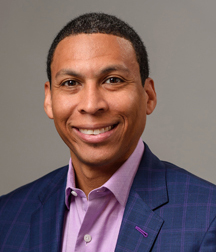
For the longest time, efforts to bring health care closer to the patient have fascinated me. Although hospital-based emergency care is the crème de la crème of acute unscheduled care, available 24-7-365 and with a plethora of consultants available to handle any complicated issue, it is often inconvenient for many Americans. When patients can’t rely on primary care physicians for emergent or after-hours care, they will seek us out or go to another venue, such as a freestanding emergency department, a retail clinic, an urgent care center, or perhaps now telemedicine. What patients want, in their moment of acute illness, is an immediate medical decision, not an appointment two weeks away.
Explore This Issue
ACEP Now: Vol 40 – No 11 – November 2021As we have seen in the past with innovations such as the retail clinic model, the adage from the movie “Field of Dreams” holds true: “If you build it, they will come.” Fifty-eight percent of visits to these convenient care facilities are for new care, not substitutions for either an emergency department or physician office visit.1 Contrary to popular belief, the presence of low-cost venues for care does not reliably divert patients away from the emergency department but instead allows patients to seek out medical advice in situations they would have managed on their own at home. The concept of supplier-induced demand occurs with every novel iteration of bringing health care closer to the patient, making access more convenient for them.
Of course, the voice whispering, “If you build it, they will come” sounds far more ominous to health insurers and government payers than it did to fictional Iowa farmer Ray Kinsella. But do we not want Americans to seek out health care? Perhaps our nation’s policymakers should worry far less about how much we spend on the marginal visit—whether it’s telemedicine or to a retail clinic, an urgent care, a physician’s office, a freestanding emergency department, or a hospital-based emergency department—and worry more about whether we have the right clinician available at the right time and in the right place for the next patient who walks through the door.
Specifically, for those of us who provide EMTALA-regulated care, it’s about time insurance and government payers worry less about how much we earn for our years of training and expertise and instead worry about whether all Americans, not just the well-off, have similar opportunities to get care in the manner most convenient to them. After all, as told in this month’s Health Policy Journal Club column, just because an urgent care visit is cheaper doesn’t mean overall health care costs will decrease.
Reference
- The evolving role of retail clinics. RAND Corporation website. Available at: https://www.rand.org/pubs/research_briefs/RB9491-2.html. Accessed Nov. 2, 2021.
Pages: 1 2 | Multi-Page





No Responses to “Are Current Efforts To Increase Access Missing the Point?”